Table of Contents
AC in Car Blowing Hot Air: Causes, Diagnosis, and Mercedes C300 Case Study
Few things are as frustrating as turning on your car’s air conditioning on a hot day only to be met with a blast of warm air. When the AC in a car is blowing hot air, it’s more than just an inconvenience it signals a problem within the HVAC system.
A functioning air conditioning system is vital for comfort, and in vehicles like the Mercedes-Benz C-Class W205, the technology is advanced but sensitive. In this article, we’ll explore the common causes of AC blowing hot air, how to diagnose the issue, and a real-world Mercedes C300 case study where the fault was traced to a compressor problem.
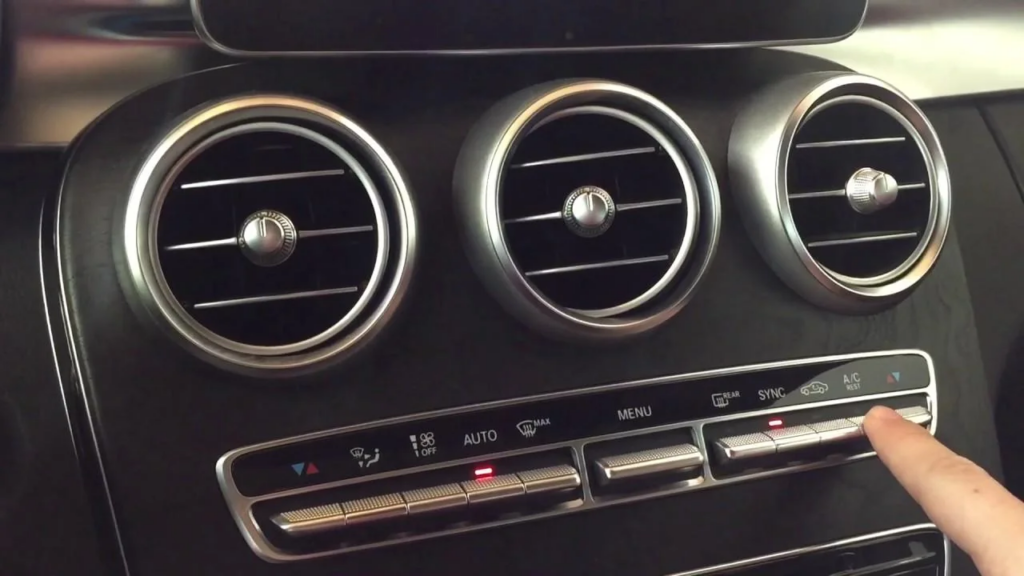
Common Causes of AC in Car Blowing Hot Air
Refrigerant Issues
- – Low refrigerant levels: The most common culprit. Without enough refrigerant, the system cannot cool air effectively. Usually caused by leaks.
- – Refrigerant leaks: Can occur in hoses, compressor seals, condensers, or evaporators. Even a tiny leak leads to major performance loss over time.
Component Failures
- – Compressor failure: The compressor circulates refrigerant. If it seizes or the clutch fails, cooling stops completely.
- – Condenser malfunction: When blocked by debris or damaged, the refrigerant can’t cool properly.
- – Evaporator problems: A defective evaporator won’t absorb heat from the cabin, preventing cooling.
Electrical Problems
- – Blown fuses: Interrupt power supply to AC components.
- – Faulty wiring: Corroded or damaged wires can stop sensors or compressors from receiving power.
- – Bad AC control module: The electronic brain of the AC can cause irregular operation or total shutdown.
System Obstructions
- – Clogged condenser: Dirt, leaves, or debris reduce airflow and heat exchange.
- – Dirty cabin air filter: Restricts airflow, reducing cooling efficiency and causing warm air output.
Case Study: Mercedes-Benz C300 W205 AC Blowing Hot Air
Background
- – Vehicle: 2018 Mercedes-Benz C300 W205 (under 50,000 miles)
- – Complaint: AC suddenly started blowing warm air despite previously working fine.
- – Previous attempts: Two mechanics unable to diagnose; issue escalated to dealership.
Initial Checks
- 1. Heating system: Functioning correctly, proving blend flap operation was intact.
- 2. Radiator fan: Engaged properly, confirming cooling fan functionality.
- 3. Compressor: Engaged and disengaged when AC was switched on/off, indicating mechanical movement.
- 4. Pressure readings:
- => Low side: 105 PSI
- => High side: 110 PSI
- => Observation: Equal pressures indicate refrigerant not circulating often pointing to a blockage or compressor issue.
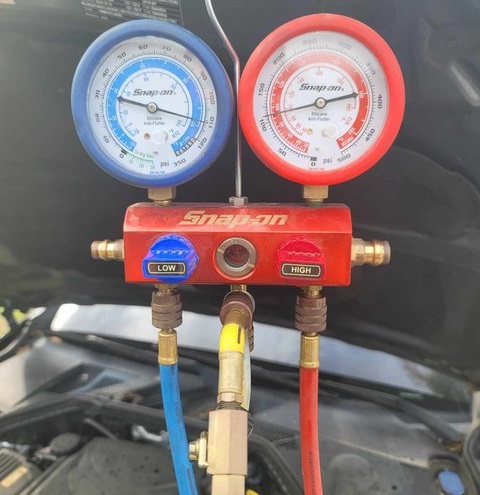
Diagnostic Trouble Codes (DTCs)
The SnapOn scanner revealed:
- – B107D-15: Additional Coolant Pump Malfunction (short circuit or open circuit)
- – B10A2-07: Actuator Motor for Left Blend Air Flap Malfunction (mechanical fault)
- – P0597-00: Coolant Thermostat Electrical Fault or Open Circuit (recurrent after clearing)
- – B113-15: Temperature Sensor ‘Right Footwell Vent’ Malfunction (short circuit or open circuit, current, stored)
These codes showed secondary HVAC/electrical concerns but not the main cause of hot air output.
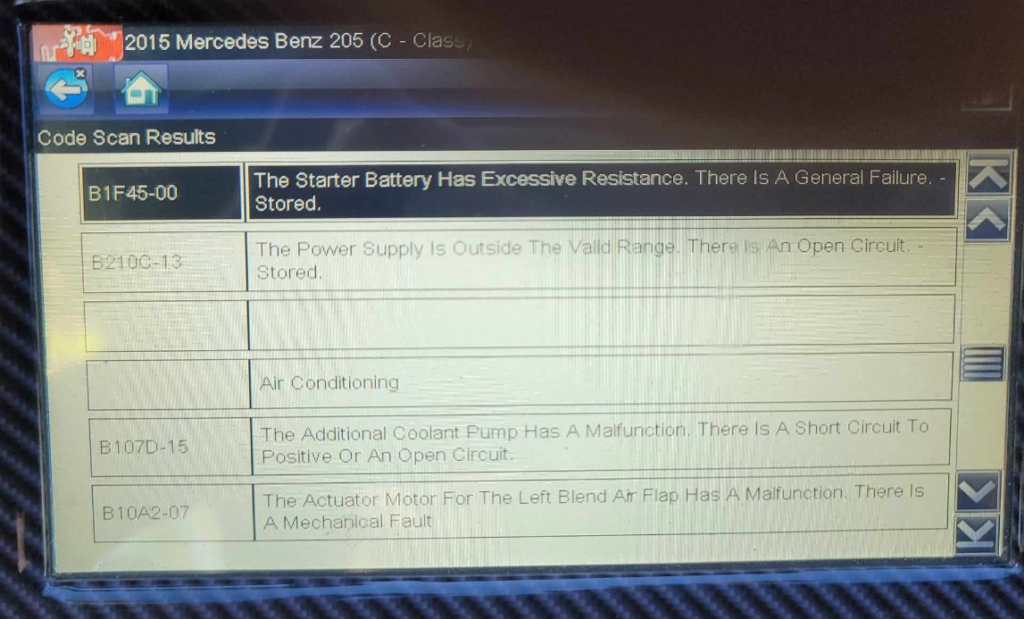
Climate Control Data Analysis
- – Refrigerant compressor regulation valve (A9/7y1): 0 mA (no current draw)
- – Magnetic clutch (A9/7y2): Open (not engaged)
- – Refrigerant pressure sensor (B12): 140 PSI (static, no differential)
- – Evaporator temperature sensor: 104°F (too warm)
- – Outside temperature sensor: 89.6°F
- – Coolant temperature: 167°F
Interpretation: The data showed that while the compressor was physically turning, it was not being activated internally. Refrigerant was not being circulated, causing equal pressure readings and hot air.


Diagnosis and Repair
Step-by-Step Diagnosis
- 1. Check refrigerant charge: Verified system was filled and no leaks were present.
- 2. Inspect expansion valve: Equal pressure readings suggested possible blockage, but valve tested clear.
- 3. Examine compressor regulation valve and clutch: Electrical data confirmed compressor was not functioning internally.
- 4. Address thermostat DTCs: Cleared and re-tested, but issue persisted.
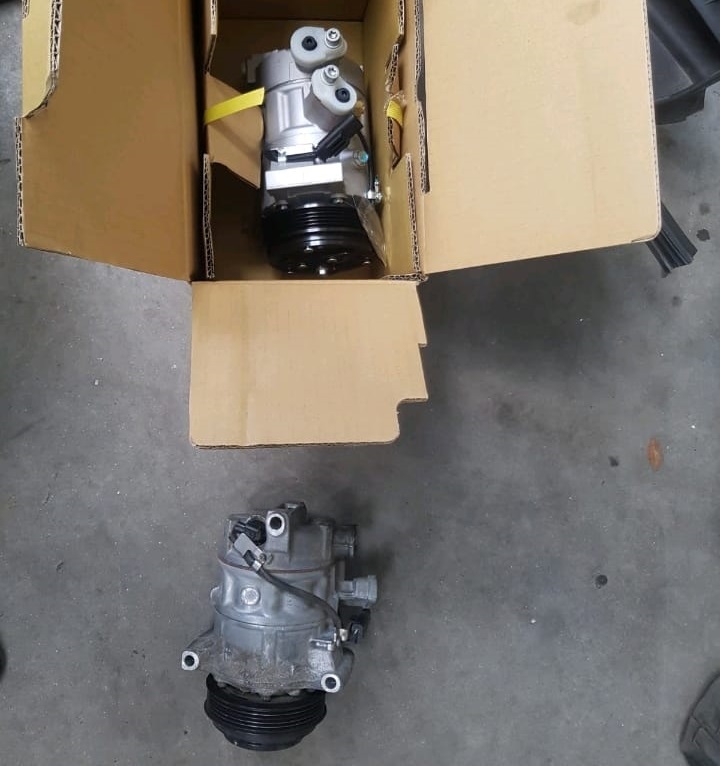
Repair Plan
- – Refrigerant recharge and leak test → System held refrigerant with no leaks.
- – Compressor replacement → Testing confirmed internal compressor fault. Installed a genuine Mercedes compressor.
- – System retest → After replacement, pressure differential restored, evaporator cooled air properly, and cabin AC performance returned to normal.
Quick Reference Table – Mercedes C300 Case
| Check | Finding | Interpretation |
|---|---|---|
| Pressure readings | Low: 105 PSI, High: 110 PSI | Equal pressures → refrigerant not circulating |
| Compressor data | No current to regulation valve, clutch open | Compressor not functioning internally |
| Expansion valve | Clear | Not blocked |
| DTCs | Coolant thermostat + actuator faults | Secondary issues, not root cause |
| Final repair | Compressor replacement | AC cooling restored |
Explore More Mercedes AC and Climate Control Issues
For a deeper dive into all AC-related issues, visit our hub page: Mercedes AC and Climate Control Problems – Complete Troubleshooting Guide. You’ll find grouped case studies, step-by-step diagnostics, and prevention tips.
How to Diagnose AC Blowing Hot Air in Any Car
Visual Inspection
- – Check for oily residue around AC lines → possible refrigerant leaks.
- – Inspect compressor clutch movement.
- – Look at condenser fins for blockages.
Using Tools
- – Manifold gauge set: Compare high and low side pressures.
- – Refrigerant sniffer or UV dye: Detect leaks not visible to the eye.
- – OBD-II scanner: Read HVAC fault codes.

Professional Diagnosis
A certified technician can:
- – Perform leak-down pressure tests.
- – Test electronic control modules.
- – Confirm compressor, condenser, or evaporator failures.
Solutions and Repairs for AC Blowing Hot Air
| Problem | Repair Solution | Cost Range (USD) |
|---|---|---|
| Low refrigerant | Leak repair + recharge | $150–$350 |
| Compressor failure | Replace compressor | $800–$1,500 |
| Blocked condenser | Clean or replace condenser | $200–$600 |
| Evaporator leak | Replace evaporator (labor-intensive) | $1,200–$2,000 |
| Electrical fault | Replace fuse/wiring repair | $50–$250 |
| Faulty blend flap | Replace actuator | $300–$600 |
FAQs – AC in Car Blowing Hot Air
Q1. Why is my car AC blowing hot air instead of cold?
Common reasons include low refrigerant, a faulty compressor, or a blocked condenser.
Q2. How do I know if my compressor is bad?
If both high and low pressures are equal and the compressor isn’t drawing current, it’s likely faulty.
Q3. Can low refrigerant cause AC to blow hot?
Yes. Without enough refrigerant, the AC system cannot absorb and release heat.
Q4. How much does it cost to fix AC blowing hot air?
Costs vary widely from $150 for a recharge to over $1,500 for a compressor or evaporator replacement.
Q5. Can I drive with my AC blowing hot air?
Yes, but prolonged driving without AC can be uncomfortable, and ignoring leaks or faults may cause further damage.
Conclusion
When the AC in a car is blowing hot air, it’s usually a sign of refrigerant loss, component failure, or electrical problems.
In this case study, a 2018 Mercedes-Benz C300 W205 was diagnosed with a faulty compressor after detailed analysis of system pressures, electrical data, and DTCs. Replacing the compressor restored full cooling performance.
For drivers, the key lesson is to use a structured diagnostic approach:
- – Check refrigerant levels and leaks.
- – Measure pressures with gauges.
- – Inspect compressor and expansion valve.
- – Use scan tools for deeper analysis.
By following this method or seeking professional help when needed you can get to the root of why your AC is blowing hot air and restore comfort to your vehicle.
Author
Written by: Mercedes Expert
Automotive Technical Trainer & Mercedes-Benz Diagnostic Specialist
With years of hands-on experience repairing and diagnosing Mercedes-Benz vehicles, specializes in case-study-based troubleshooting guides that blend workshop accuracy with educational clarity.
Last Updated: August 2025

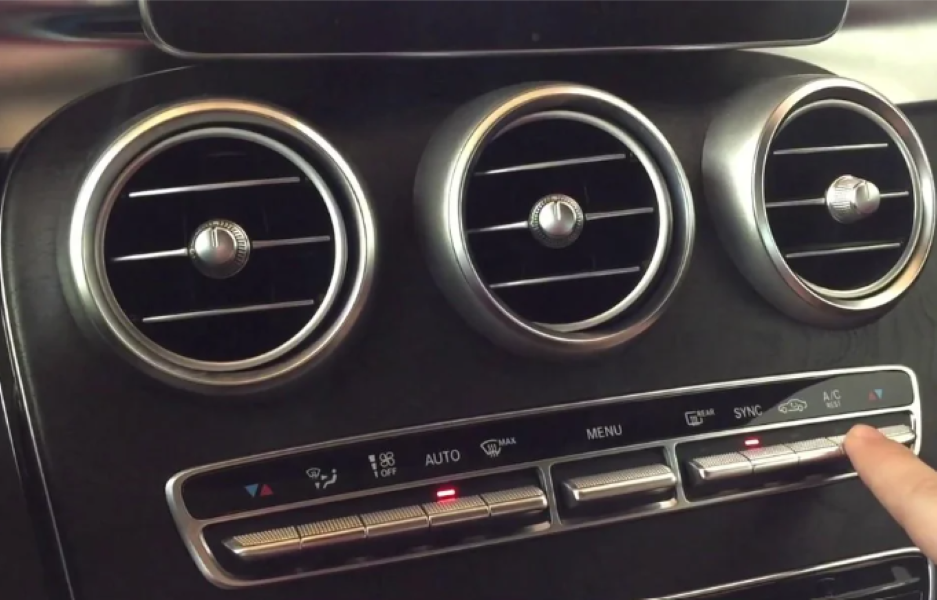
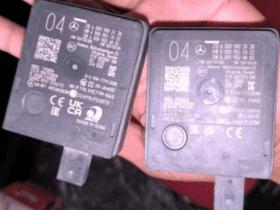
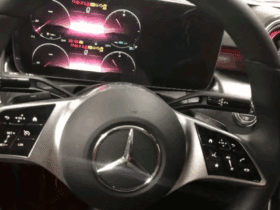
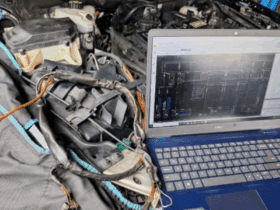
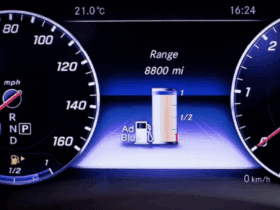
Leave a Reply